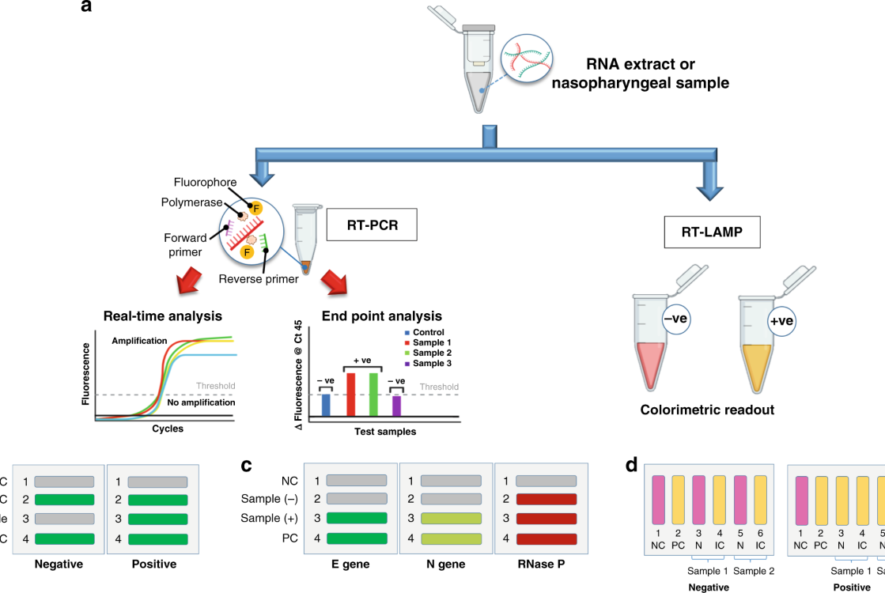
Polymerase Chain Reaction (PCR) testing has revolutionized the medical and scientific fields by providing a highly accurate and sensitive method for detecting and diagnosing various diseases. Whether used in virology, oncology, or genetic testing, PCR remains the gold standard for its unparalleled precision and efficiency. In this article, we explore the significance of PCR testing, how it works, its applications, and why it continues to be a crucial tool in modern diagnostics.
Understanding PCR Testing
PCR is a molecular technique that amplifies DNA sequences to detect the presence of genetic material from pathogens, mutations, or other targets of interest. Developed by Kary Mullis in 1983, PCR has become an essential tool in medical diagnostics, forensic science, and biological research.
The process involves three main steps:
- Denaturation: The double-stranded DNA is heated to around 95°C to break it into single strands.
- Annealing: The temperature is lowered (50-65°C), allowing short DNA primers to bind to specific target sequences.
- Extension: DNA polymerase extends the primers, synthesizing new DNA strands by adding nucleotides.
This cycle is repeated multiple times, leading to exponential amplification of the target DNA, making even minute amounts detectable.
Applications of PCR Testing
PCR testing has widespread applications across various domains, including:
1. Infectious Disease Diagnosis
One of the most well-known applications of PCR testing is in diagnosing infectious diseases. It has been instrumental in detecting viruses such as:
- SARS-CoV-2: During the COVID-19 pandemic, PCR testing became the primary method for confirming infections.
- HIV: Early detection of HIV is crucial for timely intervention and management.
- Influenza and Other Respiratory Infections: PCR helps distinguish between different respiratory pathogens, guiding effective treatment.
2. Cancer Detection and Genetic Testing
PCR is widely used in oncology to identify cancer-related genetic mutations. It aids in:
- Identifying Oncogenes: Detecting mutations in genes such as BRCA1 and BRCA2, which are linked to breast and ovarian cancer.
- Liquid Biopsies: Detecting circulating tumor DNA (ctDNA) in the blood for non-invasive cancer monitoring.
- Hereditary Diseases: Diagnosing conditions like cystic fibrosis and sickle cell anemia through genetic screening.
3. Forensic Science and Paternity Testing
PCR plays a crucial role in forensic investigations and legal cases. It enables:
- DNA Fingerprinting: Identifying suspects based on DNA evidence from crime scenes.
- Paternity and Ancestry Tests: Confirming biological relationships with high accuracy.
4. Food Safety and Environmental Monitoring
In the food industry, PCR is used to detect foodborne pathogens such as Salmonella and Listeria. Similarly, it helps in monitoring environmental contaminants, ensuring public health safety.
Why PCR is Considered the Gold Standard
PCR testing is highly regarded for several reasons:
- High Sensitivity and Specificity: It can detect even trace amounts of DNA or RNA, ensuring accurate results.
- Rapid Turnaround Time: Compared to traditional culture methods, PCR provides results in hours rather than days.
- Versatility: PCR can be applied to a wide range of fields, from medicine to agriculture and forensic science.
- Automation and Scalability: Modern PCR techniques allow for high-throughput testing, making it ideal for mass screening programs.
Advancements in PCR Technology
Over the years, PCR technology has evolved to become even more powerful and efficient. Some key advancements include:
1. Real-Time PCR (qPCR)
Quantitative PCR, or real-time PCR, allows for the quantification of DNA in real time. It is widely used in:
- Viral Load Monitoring: Assessing the severity of infections such as HIV and hepatitis.
- Gene Expression Studies: Measuring gene activity in research and clinical settings.
2. Digital PCR (dPCR)
Digital PCR enhances sensitivity by partitioning the sample into thousands of tiny reactions, allowing for absolute quantification of DNA molecules. It is useful in:
- Early Cancer Detection: Detecting minute levels of cancer mutations.
- Rare Mutation Analysis: Identifying low-frequency genetic variations with high precision.
3. Multiplex PCR
Multiplex PCR enables the simultaneous detection of multiple targets in a single reaction, improving efficiency and cost-effectiveness. It is commonly used in:
- Pathogen Detection: Identifying co-infections in patients.
- Genetic Panel Testing: Screening for multiple genetic disorders at once.
Challenges and Limitations
Despite its many advantages, PCR testing has some challenges, including:
- Contamination Risk: Even a small amount of external DNA can lead to false-positive results.
- Complexity and Cost: PCR requires specialized equipment and trained personnel, making it less accessible in some regions.
- RNA Stability: For RNA-based PCR (RT-PCR), maintaining sample integrity is crucial for accurate results.
The Future of PCR Testing
The future of PCR testing looks promising, with ongoing research focused on improving its accuracy, speed, and accessibility. Innovations such as microfluidic PCR, portable PCR devices, and AI-driven data analysis are set to further enhance its capabilities.
As technology continues to evolve, PCR testing will remain a cornerstone of modern diagnostics, playing a vital role in disease detection, medical research, and public health. Whether for pandemic response, cancer screening, or forensic investigations, PCR testing is here to stay as the gold standard in molecular diagnostics.











